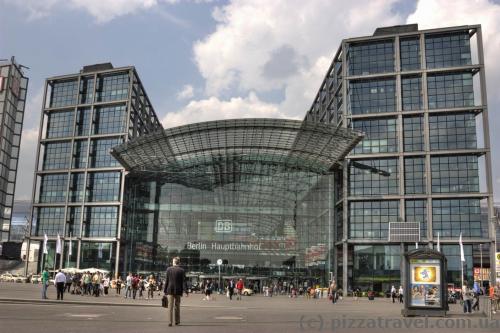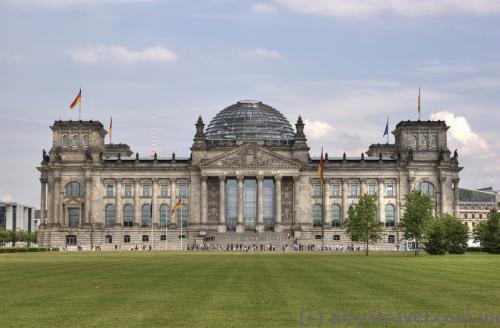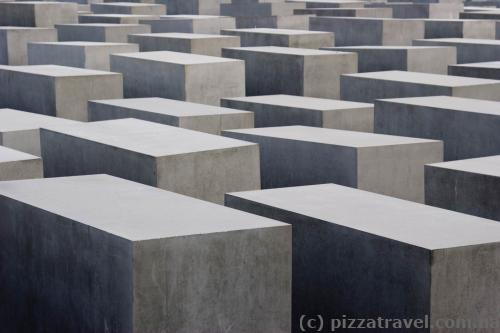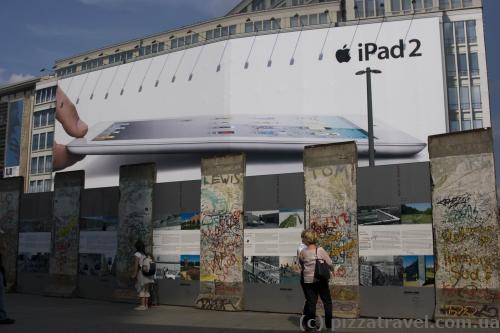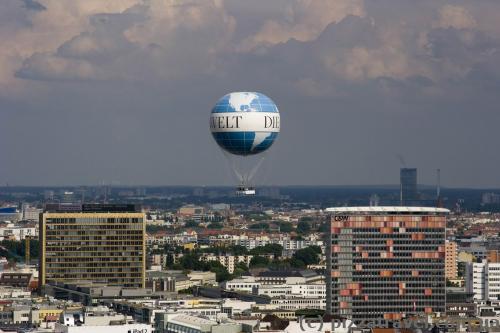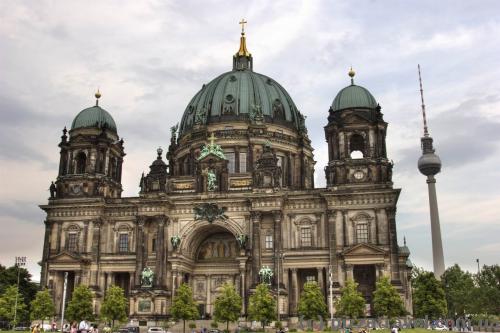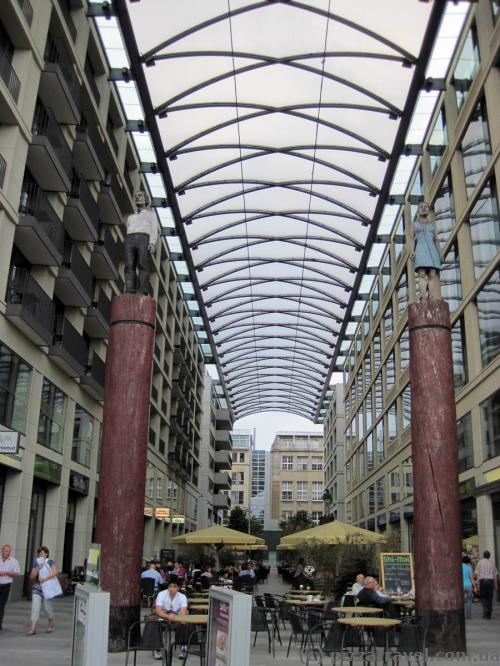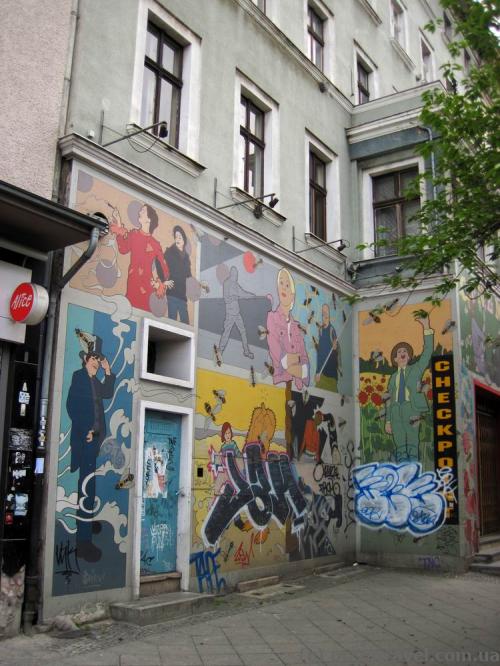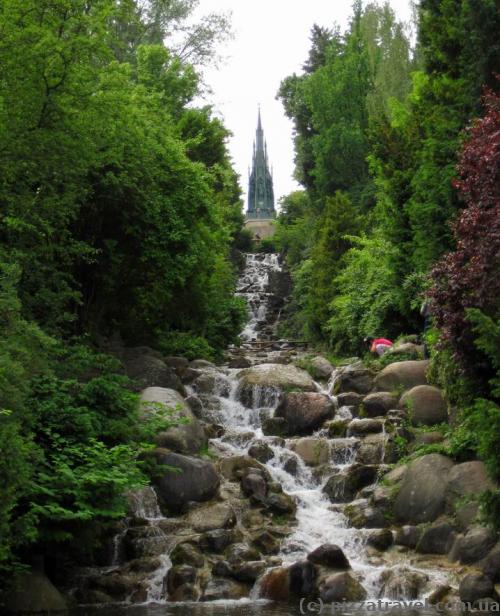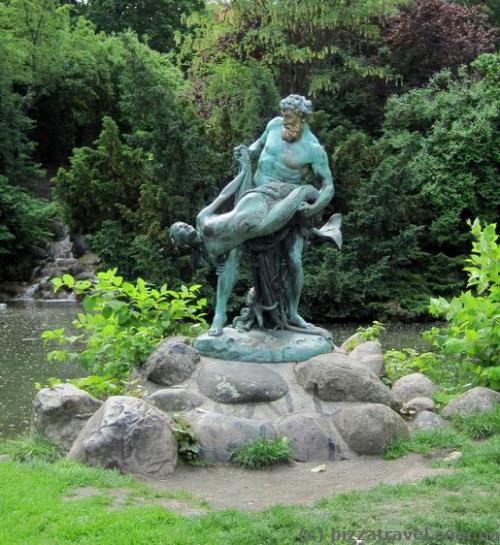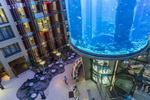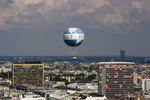Surprisingly, Berlin is often not considered by mass tourists as a tourist city. We began our journey to Germany in the capital and did not regret it.
Berlin is a great city, its population is more than 3.5 million people. A city with a tragic history, which everyone knows. We cannot even say whether there exist other big cities where half of the population lived in one epoch, and the other half in another. Only this fact makes Berlin interesting to almost any tourist.
To visit Berlin, we previously bought Berlin Welcome Card that allows free travel in public transport and discounts at various places. We bought it in the Internet, but it can be purchased in the city as well.
Our 3-day route in Berlin can be found on Google Maps.
We began our walk on the first day from the main railway station, which is an attraction itself. This is the largest and most modern railway station in Europe. To place all tracks and infrastructure in a small area, it was made ?multilevel and it's easy to get lost there. Construction took eight years, and it was opened for the World Cup 2006. 1,100 trains and more than 300,000 passengers pass through the station every day. Some escalators and elevators offer view of the city and the Reichstag. The station is located a few meters from the spot where the Berlin Wall used to stand.
From the central train station departs the subway line U55. It's very short, only 1.4 km, perhaps the shortest in the world. You can go to two stations: Bundestag and Brandenburg Gate.
We didn't get into the subway and went on foot. Passing over the Spree river via the Moltke bridge, we saw an interesting picture. That's what people do if they have no beach =)
Along the river there's a large waterfront and a bike path.
The Reichstag is the first and the main attraction that meets us in Berlin. This is probably the most famous building in Germany. The construction was completed in 1894 in the times of Kaiser Wilhelm II. On February 27, 1933, the Reichstag was burned down in an arson attack. Nazis accused Communists of setting the fire and used this fact to obtain special powers and remove political opponents.
On April 30, 1945, Soviet troops stormed Berlin and hoisted the Victory Flag at the Reichstag (everyone knows this photo). Soviet soldiers left many inscriptions on the Reichstag walls, some of which have survived during the restorations of the building. In 1947, by order of the Soviet government, "bad" inscriptions were removed and replaced with several "ideologically correct" ones. In 2002, the Bundestag discussed the removal of these signs, but the proposal was rejected by the majority. Most of the surviving inscriptions of Soviet soldiers are in the inner rooms of the Reichstag and now accessible only with a guided tour.
After the war and construction of the Berlin Wall, the Reichstag ended up on the West side and was rebuilt. After unification of Germany on June 20, 1991, Bundestag in Bonn (the capital of West Germany) decided to move to the Reichstag parliament building in Berlin. After long debates, the Council of Elders of Bundestag decided to build a modern glass dome in May 1995.
The dome of the Reichstag is one of Berlin's wonders. Thanks to it the Bundestag became the most visited parliament in the world. We didn't plan to visit the dome on the first day.
To the right is the Tiergarten park. The park is very large; the Berlin Zoo is located on its other side. There is a memorial to the fallen Soviet soldiers, a large column in the center, which you can climb, and unusual field with stones. It's the Global Stone Project by traveler Wolfgang Kraker von Schwarzenfeld, who toured the world on a three-masted ship "Pegasus" and found a pair of stones on every continent. One stone of each pair was left at home, and the other one was brought to Tiergarten. Each stone symbolizes something.
Walking along the park we got to the Brandenburg Gate. This is one of the few remaining old buildings in Berlin (1788-1791) and the second symbol of Berlin. It is depicted on the back of the German coins of 10, 20 and 50 cents.
Going ahead, we approach the huge field of stone slabs, there's 2,700 of them. This is the Holocaust Memorial in Berlin.
We go further and reach Potsdamer Platz, a place of the largest 20th century urban construction project. The most famous architects of the world turned an empty place into a futuristic city of glass and concrete. On the square there are pieces of the Berlin Wall "for tourists" and a very unusual Sony Center building. It's a good idea to come here at night and see the lights.
There's an observation deck on one of the skyscrapers.
A separate article: Observation deck on the Kolhoff Tower in Berlin
Go ahead and turn to Niderkirherstrase where you can find the only surviving peace of the Berlin Wall in the downtown. Behind the fence is the place where former Gestapo headquarters used to be.
The Berlin Wall, 155 kilometers long, was built in 1961 and became a symbol of the "cold war" for almost 30 years. During this time, over 5,000 successful escapes were made from East Germany to West Germany. In 1990, the rock band Scorpions released a song "Wind of Change", dedicated to the fall of the wall. The composition became an anthem of German reunification.
Moving on, we pass the Berlin airlift (Berlin High Flyer). The balloon takes you up to a 150-meter height. As the sun was quite bright, we decided to come here the next day in the evening.
The next interesting point is Checkpoint Charlie - border checkpoint at Friedrichstrasse, which appeared after the Berlin Wall had been built. You could have seen it in the Octopussy movie, where James Bond by Roger Moore crossed it (video).
From Checkpoint Charlie, we went further along the Leipzigerstrasse in the direction of the Museum Island.
Along the way we met many sculptures of bears called Buddy. They appeared in 2001 as an initiative of two students, just to cheer up the citizens. The project was supported by the city and now over a hundred Buddy bears stand in the streets. By the way, the name of the city is derived from the word "bear", so it's also a symbol of the city.
Don't miss the Jungfern Bridge (Maiden Bridge) - the oldest surviving bridge in Berlin and the only swing bridge in the city located on the left at the crossing of the river. And we went further to the right along the southern and the greenest part of the island along the river looking at the beautiful houses on the waterfront.
As you can see from the name, there's a large number of museums on the Museum Island. We didn't visit the museums and went further to the Nikolaiviertel block - the oldest historic district of Berlin. It is bounded by the Rathausstraße, Spandauerstraße, and Mühlendamm streets. During World War II, the block had been almost completely destroyed and then rebuilt to the city's 750th anniversary.
Crossing a road we shot a funny situation. A German lady estimates a girl's tights and a guy is laughing at it.
By the way, on all pedestrian crossings in Berlin you can see funny traffic lights. Psychologist Carl Peglau in 1961 was ordered by the Ministry of Transport to develop such a method of GDR traffic control which would reduce the number of accidents. He developed mister Ampelmann. After unification of Germany, all symbols of the GDR were removed. The same could have happened to Ampelmann, who also didn't meet the EU standards. But mass demonstrations and protests forced Bundestag to leave him. Curiously, we found Ampelmann in small towns of Western Germany.
We are on the square in front of the television tower. There's an observation deck on the tower, but we didn't go there for two reasons: We visited two other observation decks in Berlin and we knew that at the top you can view the city only through not very clean glass. Although the view from the top, judging form the photos, is good (panorama from TV Tower).
After Alexanderplatz we went to Hackesche Hoefe. This is one of the most unusual places in Berlin, a complex of early XX century buildings with Art Deco facades near the Hackescher Markt, connected by galleries with courtyards inside. Now here are modern architectural and design companies, PR agencies, and fashion boutiques. The main rule here is to look out for different interesting places.
After a walk through the Hackesche Hoefe we got on the subway and went to the Wittenbergplatz station to visit the KaDeWe shopping mall. This is a multilevel shopping mall with the grocery department at the top floor. The mall is elite, with top quality products, but also the price is higher than normal. We bought different fresh juices, pastries and returned to the hotel.
The next day we went to the Reichstag and visited the dome at 8 am. On the way there we saw a huge graffiti.
A separate article about visiting the Reichstag dome
The we went to the Berlin suburb Potsdam.
A separate article about Potsdam
On the way back we took the S-Bahn from Potsdam directly to Alexanderplatz and went for a walk along the main boulevard Unter den Linden in Berlin. The name is translated from German as "under the lime trees" because of the lime trees that grow on the street.
At intersection with the Spandauerstraße Street we turned left and visited the Berlin Aquarium SeaLife. We have visited a lot aquariums but we couldn't miss this one because of the newly opened Aquadome. This is the largest cylindrical aquarium in the world. Located in Berlin's fashionable hotel Radisson Blu, it contains about 900,000 liters of water and 2,600 species of fish. Inside there is a lift in which the guests and tourists can ride.
A separate article: Sea Life Centers in Germany + Aquadome
We went further over the Museum bridge and rested on the grass in front of the cathedral, then turned left to the Friedrichstraße Street. Having passed a little forward along the street, we found Galeries Lafayette (Quartier 207). The building was designed by Jean Nouvel, architect of the Paris Institute of the Arab World. The result was an unusual glass box with a huge funnel.
The last object of the second day was the Berlin airlift (Berlin High Flyer) which rose us to an altitude of 150 meters.
A separate article: Berlin Airlift (Berlin High Flyer)
On the third day we left the luggage at the main station and went to the district of Kreuzberg, where we walked until lunch. We liked the Victoria Park very much. On a subway we got from Prinzenstraße to the Schlesisches Tor station and walked across the river along the old Oberbaumbrücke bridge. From the Warschauerstraße train station, which is already in East Berlin, we went to the main station.
Our tour in Berlin ended. We didn't visit several places of interest, so we'll return later:
- Kurfürstendamm Street
- Berlin TV tower
- Berlin zoo
- Charlottenburg Palace
- Tempelhof airport
- The Jewish Museum and the Egyptian Museum
- Oranienshtrase Street in Kreuzberg and Hasir restaurant where the doner kebab was invented
- Volkspark Hazenhayde
- Erotic supermarket LSD
